|
BACKGROUND
THE FEASTS
EASTON
FEAST; FESTIVALS - RELIGIOUS; ATONEMENT; ATONEMENT, DAY OF; AZAZEL; PASSOVER; PENTECOST; TABERNACLES, FEAST OF:
NEW BIBLE DICTIONARY
PASSOVER; PENTECOST, FEAST OF; TABERNACLES, FEAST OF:
The
full background to this teaching is available online at this link
THE FEASTS - BIBLE DICTIONARIES
|
Online links to scriptures (New International Version [NIV] unless otherwise stated) are shown in blue
| FEAST OF TABERNACLES
|
|
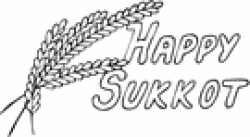 33 The LORD said to Moses, 34 “Say to the Israelites: ‘On the fifteenth day of the seventh month the LORD’s Feast of Tabernacles begins, and it lasts for seven days. 35 The first day is a sacred assembly; do no regular work. 36 For seven days present offerings made to the LORD by fire, and on the eighth day hold a sacred assembly and present an offering made to the LORD by fire. It is the closing assembly; do no regular work. 37 (“‘These are the LORD’s appointed feasts, which you are to proclaim as sacred assemblies for bringing offerings made to the LORD by fire—the burnt offerings and grain offerings, sacrifices and drink offerings required for each day. 38 These offerings are in addition to those for the LORD’s Sabbaths and in addition to your gifts and whatever you have vowed and all the freewill offerings you give to the LORD.) 39 â€â€˜So beginning with the fifteenth day of the seventh month, after you have gathered the crops of the land, celebrate the festival to the LORD for seven days; the first day is a day of rest, and the eighth day also is a day of rest. 40 On the first day you are to take choice fruit from the trees, and palm fronds, leafy branches and poplars, and rejoice before the LORD your God for seven days. 41 Celebrate this as a festival to the LORD for seven days each year. This is to be a lasting ordinance for the generations to come; celebrate it in the seventh month. 42 Live in booths for seven days: All native-born Israelites are to live in booths 43 so your descendants will know that I had the Israelites live in booths when I brought them out of Egypt. I am the LORD your God.’†44 So Moses announced to the Israelites the appointed feasts of the LORD. (Leviticus 23:33-44) 33 The LORD said to Moses, 34 “Say to the Israelites: ‘On the fifteenth day of the seventh month the LORD’s Feast of Tabernacles begins, and it lasts for seven days. 35 The first day is a sacred assembly; do no regular work. 36 For seven days present offerings made to the LORD by fire, and on the eighth day hold a sacred assembly and present an offering made to the LORD by fire. It is the closing assembly; do no regular work. 37 (“‘These are the LORD’s appointed feasts, which you are to proclaim as sacred assemblies for bringing offerings made to the LORD by fire—the burnt offerings and grain offerings, sacrifices and drink offerings required for each day. 38 These offerings are in addition to those for the LORD’s Sabbaths and in addition to your gifts and whatever you have vowed and all the freewill offerings you give to the LORD.) 39 â€â€˜So beginning with the fifteenth day of the seventh month, after you have gathered the crops of the land, celebrate the festival to the LORD for seven days; the first day is a day of rest, and the eighth day also is a day of rest. 40 On the first day you are to take choice fruit from the trees, and palm fronds, leafy branches and poplars, and rejoice before the LORD your God for seven days. 41 Celebrate this as a festival to the LORD for seven days each year. This is to be a lasting ordinance for the generations to come; celebrate it in the seventh month. 42 Live in booths for seven days: All native-born Israelites are to live in booths 43 so your descendants will know that I had the Israelites live in booths when I brought them out of Egypt. I am the LORD your God.’†44 So Moses announced to the Israelites the appointed feasts of the LORD. (Leviticus 23:33-44)
|
| THE HARVEST OF LIFE |
|
 The Feast of Tabernacles was the most joyous time of the year, celebrating as it did the autumn harvest of grapes, olives and figs, tantalising the taste buds, both then and now. Yet as well as being celebratory, it was also sacred, for its eight-day cycle started and concluded with Sabbath days. Logic also tells us that, in six years out of seven, the Feast would also include a third Sabbath day, the normal weekly one. So the Feast of Tabernacles could be described as being holy and joyous or even joyously holy! The time to be looked forward too in both the religious and gastronomic years! The Feast of Tabernacles was the most joyous time of the year, celebrating as it did the autumn harvest of grapes, olives and figs, tantalising the taste buds, both then and now. Yet as well as being celebratory, it was also sacred, for its eight-day cycle started and concluded with Sabbath days. Logic also tells us that, in six years out of seven, the Feast would also include a third Sabbath day, the normal weekly one. So the Feast of Tabernacles could be described as being holy and joyous or even joyously holy! The time to be looked forward too in both the religious and gastronomic years!
|
| THE FEAST ITSELF |
|
 The feast was celebrated with rejoicing over a seven-day period from the 15th to the 21st days of the seventh month. During this period the people lived in temporary booths made of tree branches, often built on the roofs of their houses. The Feast began with a special Sabbath day, ending eight days later on the 22nd day with a further special Sabbath. Six essential characteristics can be garnered from the specifics of the Feast. The feast was celebrated with rejoicing over a seven-day period from the 15th to the 21st days of the seventh month. During this period the people lived in temporary booths made of tree branches, often built on the roofs of their houses. The Feast began with a special Sabbath day, ending eight days later on the 22nd day with a further special Sabbath. Six essential characteristics can be garnered from the specifics of the Feast.
|
| 1. Autumn Rains: |
|
 A time of looking forward to the autumn rains soon to come, at the end of three long, hot, dry months of summer. A time of looking forward to the autumn rains soon to come, at the end of three long, hot, dry months of summer.
Joel 2:23-4
|
| 2. Fruit Harvest Time: |
|
 Of grapes, dates, summer figs, and olives. Of grapes, dates, summer figs, and olives.
Leviticus 23:40
|
| 3. Living in Booths: |
|
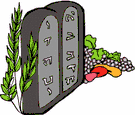 The booths, or huts made of entwined boughs of trees such as palm, willow, olive, pine and myrtle were to be lived in for seven days to celebrate; The booths, or huts made of entwined boughs of trees such as palm, willow, olive, pine and myrtle were to be lived in for seven days to celebrate;
a. Completion of the Harvest: The year’s labours were complete.
b. The Memory of their Release from Egypt: The Israelites had lived in booths during their escape from Egypt. This remembrance linked Tabernacles with Passover. The beginning with the end.
Leviticus 23:40-3
|
| 4. Feast of the Seventh Month: |
|
 Speaking of perfection, fullness and completion. Speaking of perfection, fullness and completion.
Leviticus 23:39
|
| 5. Many Sacrifices: |
|
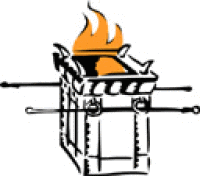 Far more sacrifices than in any other feast including; Far more sacrifices than in any other feast including;
a. Seventy Bullocks over 7 Days: Starting with 13 the first day, then reducing by 1 per day. One further bullock on the 8th day.
b. Fourteen Rams over 7 Days: 2 per day with 2 more on the 8th day.
c. Ninety-eight Lambs over 7 days: 14 per day plus a further 14 on the 8th day.
d. Accompanying Meal and Drink Offerings: Of fine flour and wine.
e. Offerings of Goats: One goat per day for 7 days plus another on the 8th day.
f. Daily Sacrifices: Of 2 lambs per day plus two more on the 8th day plus daily meal and drink offerings.
The priest’s work had obviously not yet finished for the year, even if the peoples had!
Numbers 29:12-40
|
| 6. The Eighth Day: |
|
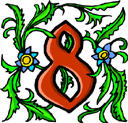 The final, 8th day of the Feast of Tabernacles, the 22nd day of the 7th month consisted of a sacred, closing assembly that concluded the Feast. The final, 8th day of the Feast of Tabernacles, the 22nd day of the 7th month consisted of a sacred, closing assembly that concluded the Feast.
Leviticus 23:36
|
| THE HISTORICAL SIGNIFICANCE OF TABERNACLES |
|
 Throughout scripture, the three-part Feast of Tabernacles is referred to more frequently than either Passover or Pentecost. The Tabernacle Feasts have always been the focal point during periods of restoration, right throughout history. In particular, the books of Ezra, Nehemiah, Haggai and Zechariah, dealing with the rebuilding of Zerubbabel’s Temple from 536-516BC, and the rest of the city over the following 75 years, focus particularly strongly upon the Tabernacle Feasts. This temple replaced Solomon’s Temple, destroyed in 586BC, when the defeated Israelites were exiled to Persia. Throughout scripture, the three-part Feast of Tabernacles is referred to more frequently than either Passover or Pentecost. The Tabernacle Feasts have always been the focal point during periods of restoration, right throughout history. In particular, the books of Ezra, Nehemiah, Haggai and Zechariah, dealing with the rebuilding of Zerubbabel’s Temple from 536-516BC, and the rest of the city over the following 75 years, focus particularly strongly upon the Tabernacle Feasts. This temple replaced Solomon’s Temple, destroyed in 586BC, when the defeated Israelites were exiled to Persia.
At the completion of the total restoration of Jerusalem in 445BC, it is significant that the book of the Law was read out to the people, not during the Feast of Passover as we would naturally expect, but rather, during the Feast of Tabernacles. (Nehemiah 8:1-18) For this was the pattern established throughout the Old Testament. (2 Chronicles 17:7-9, Malachi 2:1-10) Jesus himself illuminated the word at the Temple in Jerusalem during the Feast of Tabernacles. (John 7:1-52) It is therefore logical to expect that the full and final illumination of Scripture will occur during the period of the end-time Tabernacle church.
Of significance too, is the timing of God’s ‘launchings’ of His church. The Old Testament church, founded with the building of the Tabernacle of Moses, was dedicated at the Feast of Passover, (Exodus 40:2) while the New Testament church was birthed on the Day of Pentecost. (Acts 2:1-47) Understanding that God works in patterns of three, it is again logical that God’s perfect church, the Bride of Christ, will be established during the Feast of Tabernacles.
|
| <i>NEXT WEEK</i> |
|
 Finally, the culmination of 10 weeks of studies! And it's worth the wait! Finally, the culmination of 10 weeks of studies! And it's worth the wait!
The Feast of Tabernacles is just so rich in meaning and revelation to us today. Together with the Day of Atonement, it reveals the potential future direction of our individual Christian walk and of the church as a whole. This is exciting and of crucial importance, for as the Feast of Tabernacles was the pinnacle of the Jewish religious year, so its spiritual fulfilment represents the glorious culmination of God’s plan of reconciliation between Himself and mankind.
|
| A NOTE FROM DAVID |
|
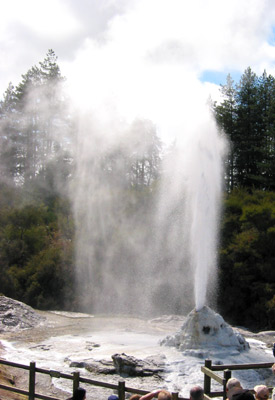 Although we understand Passover and Pentecost through experience, Tabernacles was, and always has been the most special Feast to the Jews. So it will be for us too! Something to look forward too! Although we understand Passover and Pentecost through experience, Tabernacles was, and always has been the most special Feast to the Jews. So it will be for us too! Something to look forward too!
The thin crust of the earth in certain parts of New Zealand gives rise to some spectacular sights.
Rotorua: Lady Knox Geyser, Waiotapu
Near Waiotapu, the Lady Knox geyser erupts at about 10:00 every morning. It can shoot water up about 30 metres in the air on its first blast and then it pulses at around 5 or 10 metres for about half an hour.
|
So until next week.......
MAY GOD BLESS YOU AND YOU BLESS GOD!
His servant and yours
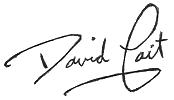
Learn more about us at...
www.wwj.org.nz/about.php
|
A DAVID'S DOODLING
18. A foolish heart seeks only God’s blessings, while a wise heart seeks to bless others, but a godly heart first blesses God.
David Tait
|
Check
out the WWJ website for….
More David's Doodlings: www.wwj.org.nz/dd.php
Reports on past Ministry visits: http://www.wwj.org.nz/diary.php
Eagles Fly High!: http://www.wwj.org.nz/eagle.php
Eagles Fly High! (Pastors, Teachers and Students): http://www.wwj.org.nz/eaglepts.php
God Facts (A mine of information): http://www.wwj.org.nz/gfacts.php
|

 33 The LORD said to Moses, 34 “Say to the Israelites: ‘On the fifteenth day of the seventh month the LORD’s Feast of Tabernacles begins, and it lasts for seven days. 35 The first day is a sacred assembly; do no regular work. 36 For seven days present offerings made to the LORD by fire, and on the eighth day hold a sacred assembly and present an offering made to the LORD by fire. It is the closing assembly; do no regular work. 37 (“‘These are the LORD’s appointed feasts, which you are to proclaim as sacred assemblies for bringing offerings made to the LORD by fire—the burnt offerings and grain offerings, sacrifices and drink offerings required for each day. 38 These offerings are in addition to those for the LORD’s Sabbaths and in addition to your gifts and whatever you have vowed and all the freewill offerings you give to the LORD.) 39 â€â€˜So beginning with the fifteenth day of the seventh month, after you have gathered the crops of the land, celebrate the festival to the LORD for seven days; the first day is a day of rest, and the eighth day also is a day of rest. 40 On the first day you are to take choice fruit from the trees, and palm fronds, leafy branches and poplars, and rejoice before the LORD your God for seven days. 41 Celebrate this as a festival to the LORD for seven days each year. This is to be a lasting ordinance for the generations to come; celebrate it in the seventh month. 42 Live in booths for seven days: All native-born Israelites are to live in booths 43 so your descendants will know that I had the Israelites live in booths when I brought them out of Egypt. I am the LORD your God.’†44 So Moses announced to the Israelites the appointed feasts of the LORD. (Leviticus 23:33-44)
33 The LORD said to Moses, 34 “Say to the Israelites: ‘On the fifteenth day of the seventh month the LORD’s Feast of Tabernacles begins, and it lasts for seven days. 35 The first day is a sacred assembly; do no regular work. 36 For seven days present offerings made to the LORD by fire, and on the eighth day hold a sacred assembly and present an offering made to the LORD by fire. It is the closing assembly; do no regular work. 37 (“‘These are the LORD’s appointed feasts, which you are to proclaim as sacred assemblies for bringing offerings made to the LORD by fire—the burnt offerings and grain offerings, sacrifices and drink offerings required for each day. 38 These offerings are in addition to those for the LORD’s Sabbaths and in addition to your gifts and whatever you have vowed and all the freewill offerings you give to the LORD.) 39 â€â€˜So beginning with the fifteenth day of the seventh month, after you have gathered the crops of the land, celebrate the festival to the LORD for seven days; the first day is a day of rest, and the eighth day also is a day of rest. 40 On the first day you are to take choice fruit from the trees, and palm fronds, leafy branches and poplars, and rejoice before the LORD your God for seven days. 41 Celebrate this as a festival to the LORD for seven days each year. This is to be a lasting ordinance for the generations to come; celebrate it in the seventh month. 42 Live in booths for seven days: All native-born Israelites are to live in booths 43 so your descendants will know that I had the Israelites live in booths when I brought them out of Egypt. I am the LORD your God.’†44 So Moses announced to the Israelites the appointed feasts of the LORD. (Leviticus 23:33-44)  The Feast of Tabernacles was the most joyous time of the year, celebrating as it did the autumn harvest of grapes, olives and figs, tantalising the taste buds, both then and now. Yet as well as being celebratory, it was also sacred, for its eight-day cycle started and concluded with Sabbath days. Logic also tells us that, in six years out of seven, the Feast would also include a third Sabbath day, the normal weekly one. So the Feast of Tabernacles could be described as being holy and joyous or even joyously holy! The time to be looked forward too in both the religious and gastronomic years!
The Feast of Tabernacles was the most joyous time of the year, celebrating as it did the autumn harvest of grapes, olives and figs, tantalising the taste buds, both then and now. Yet as well as being celebratory, it was also sacred, for its eight-day cycle started and concluded with Sabbath days. Logic also tells us that, in six years out of seven, the Feast would also include a third Sabbath day, the normal weekly one. So the Feast of Tabernacles could be described as being holy and joyous or even joyously holy! The time to be looked forward too in both the religious and gastronomic years!  The feast was celebrated with rejoicing over a seven-day period from the 15th to the 21st days of the seventh month. During this period the people lived in temporary booths made of tree branches, often built on the roofs of their houses. The Feast began with a special Sabbath day, ending eight days later on the 22nd day with a further special Sabbath. Six essential characteristics can be garnered from the specifics of the Feast.
The feast was celebrated with rejoicing over a seven-day period from the 15th to the 21st days of the seventh month. During this period the people lived in temporary booths made of tree branches, often built on the roofs of their houses. The Feast began with a special Sabbath day, ending eight days later on the 22nd day with a further special Sabbath. Six essential characteristics can be garnered from the specifics of the Feast.  A time of looking forward to the autumn rains soon to come, at the end of three long, hot, dry months of summer.
A time of looking forward to the autumn rains soon to come, at the end of three long, hot, dry months of summer.  Of grapes, dates, summer figs, and olives.
Of grapes, dates, summer figs, and olives.  The booths, or huts made of entwined boughs of trees such as palm, willow, olive, pine and myrtle were to be lived in for seven days to celebrate;
The booths, or huts made of entwined boughs of trees such as palm, willow, olive, pine and myrtle were to be lived in for seven days to celebrate; Speaking of perfection, fullness and completion.
Speaking of perfection, fullness and completion.  Far more sacrifices than in any other feast including;
Far more sacrifices than in any other feast including; The final, 8th day of the Feast of Tabernacles, the 22nd day of the 7th month consisted of a sacred, closing assembly that concluded the Feast.
The final, 8th day of the Feast of Tabernacles, the 22nd day of the 7th month consisted of a sacred, closing assembly that concluded the Feast.  Throughout scripture, the three-part Feast of Tabernacles is referred to more frequently than either Passover or Pentecost. The Tabernacle Feasts have always been the focal point during periods of restoration, right throughout history. In particular, the books of Ezra, Nehemiah, Haggai and Zechariah, dealing with the rebuilding of Zerubbabel’s Temple from 536-516BC, and the rest of the city over the following 75 years, focus particularly strongly upon the Tabernacle Feasts. This temple replaced Solomon’s Temple, destroyed in 586BC, when the defeated Israelites were exiled to Persia.
Throughout scripture, the three-part Feast of Tabernacles is referred to more frequently than either Passover or Pentecost. The Tabernacle Feasts have always been the focal point during periods of restoration, right throughout history. In particular, the books of Ezra, Nehemiah, Haggai and Zechariah, dealing with the rebuilding of Zerubbabel’s Temple from 536-516BC, and the rest of the city over the following 75 years, focus particularly strongly upon the Tabernacle Feasts. This temple replaced Solomon’s Temple, destroyed in 586BC, when the defeated Israelites were exiled to Persia.  Finally, the culmination of 10 weeks of studies! And it's worth the wait!
Finally, the culmination of 10 weeks of studies! And it's worth the wait!  Although we understand Passover and Pentecost through experience, Tabernacles was, and always has been the most special Feast to the Jews. So it will be for us too! Something to look forward too!
Although we understand Passover and Pentecost through experience, Tabernacles was, and always has been the most special Feast to the Jews. So it will be for us too! Something to look forward too!